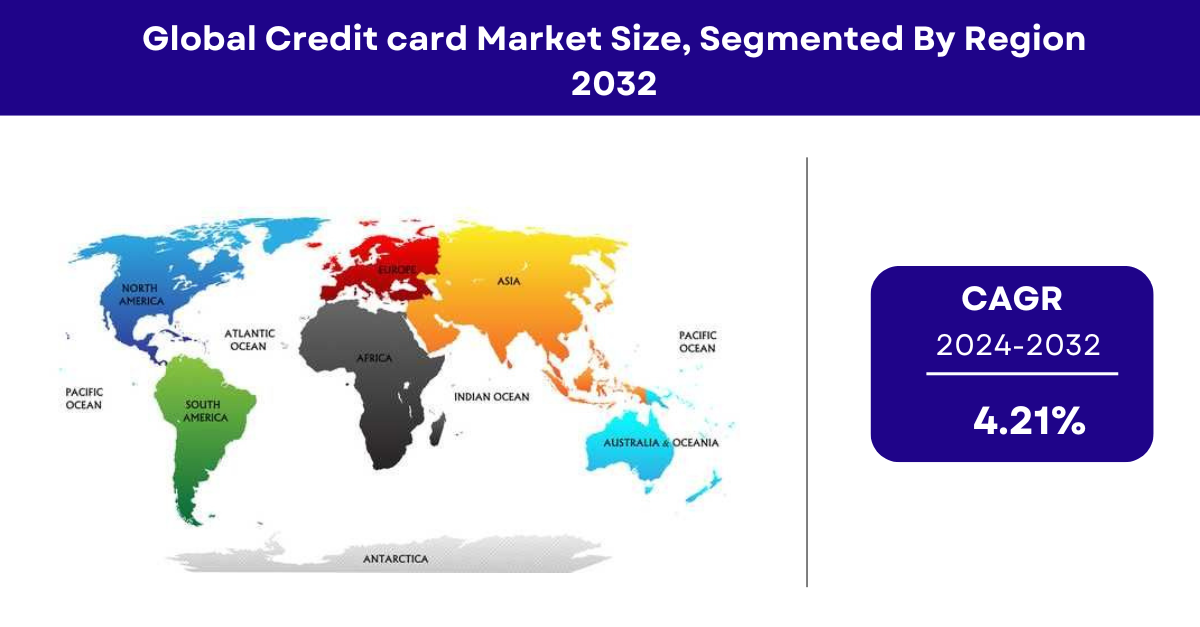Credit card Market Overview:
The credit card market is a pivotal component of the global financial services industry, offering consumers a convenient and flexible method of payment. Credit cards have evolved significantly since their inception, now incorporating advanced technology such as EMV chips and contactless payment systems. The market is characterized by a high degree of innovation, with issuers continuously introducing new features, rewards programs, and security enhancements to attract and retain customers. With increasing consumer spending, the demand for credit cards is on the rise, driven by factors such as the growth of e-commerce, improved financial literacy, and urbanization.
The credit card market size is projected to grow from USD 14955.4 Billion in 2023 to USD 20800.5 Billion by 2032, exhibiting a compound annual growth rate (CAGR) of 4.21% during the forecast period (2023 - 2032).
Get a sample PDF of the report at –
https://www.marketresearchfuture.com/sample_request/21405
Competitive Analysis:
The competitive landscape of the credit card market is highly dynamic, with major players including,
- American Express
- Banco Itau
- Bank of America Merrill Lynch
- Bank of Brazil
- Bank of East Asia
- Chase Commercial Banking
- Diners Club
Discover dominating the industry. These companies compete fiercely by offering diverse card options tailored to different consumer needs, such as travel rewards, cashback, and low-interest rates. Additionally, fintech companies are entering the market, leveraging advanced technology to offer innovative credit solutions and digital payment platforms. The competitive pressure has led to a surge in mergers and acquisitions, strategic partnerships, and marketing campaigns aimed at expanding market share and enhancing customer loyalty.
Market Drivers:
Several factors are propelling the growth of the credit card market. Firstly, the rise of digital payment methods and the increasing penetration of smartphones have made credit card transactions more accessible and convenient. Secondly, the growth of the e-commerce sector has significantly boosted the use of credit cards for online purchases. Thirdly, consumer preference for rewards and loyalty programs offered by credit card issuers has driven market demand. Additionally, economic factors such as rising disposable incomes and improved financial inclusion efforts by governments and financial institutions have contributed to the market's expansion.
Market Restraints:
Despite its growth, the credit card market faces several challenges. High levels of consumer debt and the risk of default pose significant concerns for issuers. Regulatory pressures and stringent compliance requirements can also limit market growth, as they necessitate substantial investments in technology and processes to ensure adherence. Moreover, issues related to cybersecurity and fraud remain critical, necessitating continuous innovation in security measures. Economic downturns and fluctuations can also negatively impact consumer spending and, consequently, the credit card market.
Segment Analysis:
The credit card market can be segmented based on card type, card issuer, and application. By card type, the market includes general-purpose cards, retail cards, and premium cards. General-purpose cards, such as those issued by Visa and MasterCard, dominate the market due to their widespread acceptance and versatile usage. Retail cards are co-branded with specific retailers and offer benefits like store discounts and special financing options. Premium cards cater to high-net-worth individuals, offering exclusive perks such as concierge services, airport lounge access, and higher credit limits.
By card issuer, the market is segmented into banks, credit unions, and non-bank institutions. Banks are the primary issuers, leveraging their extensive customer base and financial resources. Credit unions offer competitive rates and personalized services, attracting a niche market segment. Non-bank institutions, including fintech companies, are gaining traction by providing innovative solutions and digital-first approaches.
By application, the market is divided into personal use and business use. Personal use dominates the market, driven by individual consumer spending on goods, services, and travel. Business use is also significant, with companies utilizing credit cards for expense management, procurement, and travel.
Browse a Full Report –
https://www.marketresearchfuture.com/reports/credit-card-market-21405
Regional Analysis:
The credit card market exhibits regional variations in terms of growth and adoption rates. North America holds a significant share of the market, driven by high consumer spending, advanced financial infrastructure, and the widespread adoption of digital payment methods. The United States, in particular, is a major market, with a high penetration of credit cards and a robust rewards program culture.
In Europe, the market is also well-developed, with countries like the UK, Germany, and France leading in terms of credit card usage. The region's regulatory framework, which emphasizes consumer protection and security, has fostered a stable market environment. Additionally, the growth of e-commerce in Europe has further propelled credit card adoption.
The Asia-Pacific region is witnessing rapid growth in the credit card market, driven by increasing urbanization, rising disposable incomes, and a growing middle class. Countries like China, India, and Japan are key markets, with significant investments in digital payment infrastructure and financial inclusion initiatives.
Latin America and the Middle East & Africa regions are also experiencing growth, albeit at a slower pace. In these regions, efforts to enhance financial inclusion and the adoption of digital banking services are contributing to the expansion of the credit card market. Countries like Brazil, Mexico, and the UAE are emerging as important markets, driven by economic development and increasing consumer spending.
The credit card market is a dynamic and evolving sector, influenced by technological advancements, consumer preferences, and economic factors. While opportunities for growth are substantial, issuers must navigate challenges such as regulatory compliance, cybersecurity threats, and market competition to succeed in this competitive landscape.
Top Trending Reports:
Smart Contracts in Healthcare Market
High Altitude Long Endurance Market
Contact
Market Research Future (Part of Wantstats Research and Media Private Limited)
99 Hudson Street, 5Th Floor
New York, NY 10013
United States of America
+1 628 258 0071 (US)
+44 2035 002 764 (UK)
Email: sales@marketresearchfuture.com
Website: https://www.marketresearchfuture.com

